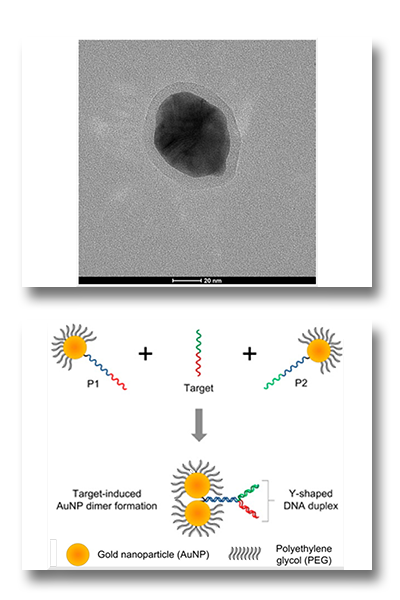Materials having dimensions of nanometers (10-9m) such as Nanoparticles (NPs), show optical properties which are related to their size and shape. NPs of metals display a collective electronic excitation (plasmon) when an UV-Vis radiation interacts with them. This effect is named Localized Surface Plasmon Resonance (LSPR) where the resonant frequency is tightly depending on the morphological properties of the NPs. Such resonant frequency can be tuned changing either the NPs’ aggregation or the refraction index of the medium surrounding them. Consequently, the NPs can be successfully employed as sensors able to detect, in a highly selective and sensitive manner, the presence of specific target compounds (analytes) by displaying a variation on the NPs’ optical properties. In this framework, the ISM is developing research activities on NPs’ generation for chemical, environmental sensors and bio-sensors, and on their characterization features. With this aim, microscopic and spectroscopic techniques with high spatial (HR-TEM) and temporal resolution (femtosecond) both in fluorescence (TCSPC and Up-conversion) and in absorption (Pump&Probe) are, respectively, used.
Staff: A. Guarnaccio, D. Mollica, A. Morone, S. Orlando, G.P. Parisi, A. Santagata


 English (UK)
English (UK)  Italiano (Italia)
Italiano (Italia)